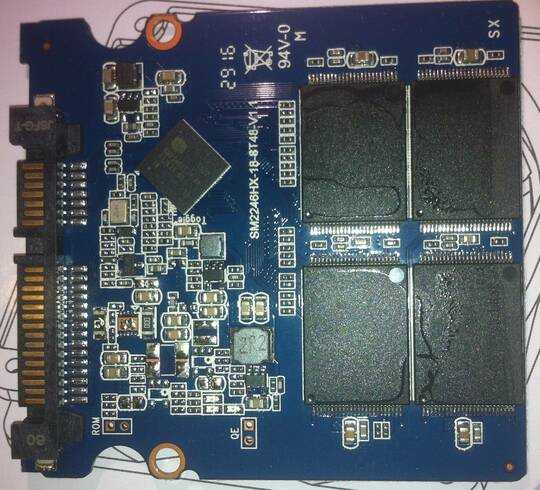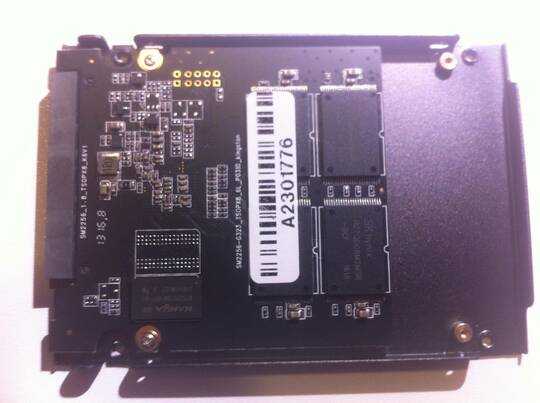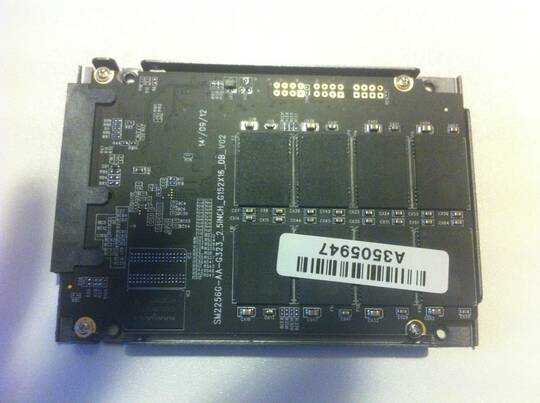1
All 60 GB SSDs I have found available have a write speed of around 90 MB/s, whilst 120 GB SSDs and higher have upwards of 400 MB/s.
Both have similar read speeds of around 500 MB/s and upwards.
Is there some technological issue that prevents higher write speeds in smaller volume SSDs whilst not affecting read speeds? If so, what is it?
It is suggested below that a RAID 0 configuration could be being employed in the larger drives; this would increase the write speed of the higher end disks while leaving the read speed to be determined by the SATA III connectors. Can anyone cite sources in support of this?
Here are some vendor-provided speeds from Transcend's SSD product fact sheet, available (PDF) in French and in English:
Reading speed/Writing speed
Size Sequential Random access
32GB 230MB/s, 40MB/s 90MB/s, 40MB/s
64GB 450MB/s, 80MB/s 170MB/s, 80MB/s
128GB 550MB/s, 170MB/s 270MB/s, 170MB/s
256GB 560MB/s, 320MB/s 300MB/s, 300MB/s
512GB 560MB/s, 460MB/s 300MB/s, 300MB/s
1TB 560MB/s, 460MB/s 300MB/s, 300MB/s
I bought 60 GB, 120 GB and 240 GB drives from the same manufacturer and disassembled them.
This is the 120 GB drive (had to be removed from case to see the chips):



1The small SSD's are probably older, or lower grade stock. – user1751825 – 2016-09-30T01:11:02.650
60GB SSDs use slower older hardware. Besides that fact there isn't any reason the newer faster hardware couldn't be sold in smaller sizes. Consumers just demand larger sizes so that isn't done. The speed delta isn't that large. – Ramhound – 2016-09-30T01:11:27.223
Do you happen to have specific examples? e.g. Are they within one series by a single manufacturer? Generally, higher capacities are faster because they have more NAND chips that can be accessed in parallel, might have more cache space (SLC cache on MLC/TLC NAND), DRAM, etc.. – Bob – 2016-09-30T01:56:59.657
@Bob I cannot find examples of manufacturers that do not have this limitation, although the more well recognised companies do not seem to be selling them anymore. Some examples are Kingston, Hectron, Devro and Zheino. – Matthew – 2016-09-30T07:51:07.430
@bob I want to use one for a separate linux drive as I do not like having a linux partition. When it arrives I will disassemble it, compare the NAND chips and then upload the pictures. The reason I am still confused is that there is no gain in the write speed of the larger (480GB-960GB) drives over the 120GB drives, as I would expect if it was a simple question of the amount of space. – Matthew – 2016-09-30T07:54:46.830
Aren't larger SSD's using some sort of RAID 0 over their storage chips? – Martijn – 2016-09-30T09:05:55.327
@Martijn Do you have a source? Would using RAID 0 affect the write speed but not the read speed? – Matthew – 2016-10-01T21:03:42.420
1@Matthew I believe it is not strictly RAID0 but the memory chip controller just has more outputs which should spread the write more evenly among memory chips. The read speed is limited by the interface used to connect said chips to the controller. – Martijn – 2016-10-01T21:27:43.407
Don't quote me on this, but I've heard it explained like this somewhere, can't recall where. – Martijn – 2016-10-01T21:28:20.333
@Martijn But if they were using a different storage system like RAID 0, wouldn't the read speeds be similarly affected? – Matthew – 2016-10-03T14:48:30.570
1@Matthew read is much faster than write thus being limited by the interface, not the chips or controller. – Martijn – 2016-10-03T14:51:56.150
@Martijn Ah, that is the kind of answer I was looking for. So read is as fast as the SATA III allows, but write is determined by the chips and controller (potentially supported by RAID in higher capacity drives). You should put all this in an answer. I will still upload the pictures to be thorough, But I think you may have answered the question here. – Matthew – 2016-10-03T15:01:03.867
@Matthew I don't have the sources to back this up which is the reason I'm not posting this as an answer. I believe this is how it works until someone corrects me. – Martijn – 2016-10-03T15:46:34.710
@Martijn Since the question has now been put on hold, I suppose this is what I shall have to believe also. – Matthew – 2016-10-07T12:36:49.627